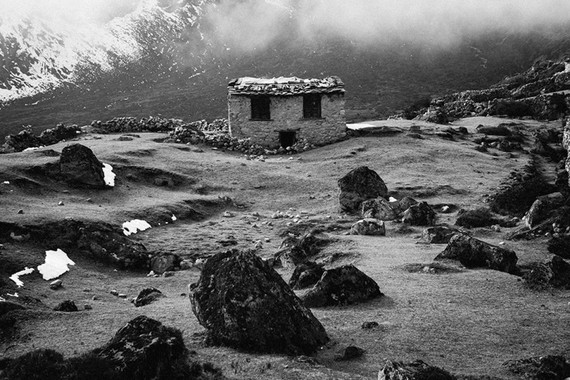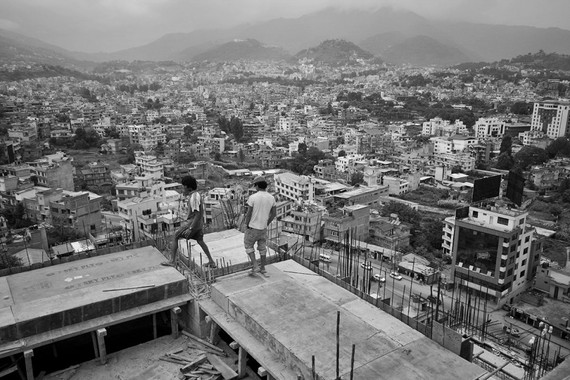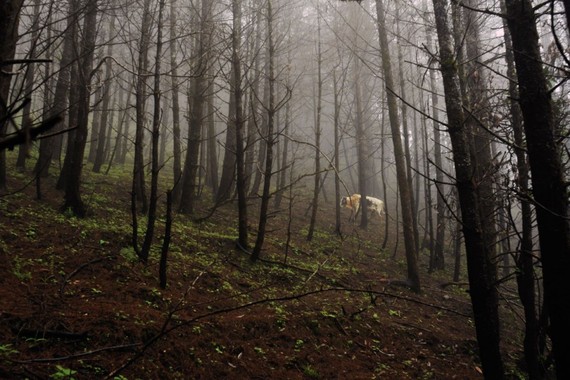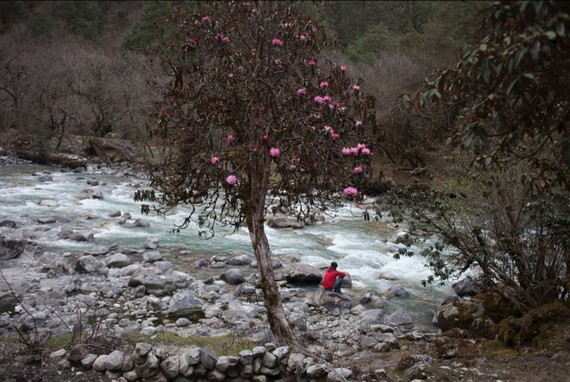Frederic Lecloux has been in and out of Nepal numerous times in the past 20 years. Yet, he still doesn't know why. Perhaps it's the disorder, he states in his Photo Kathmandu bio; "a certain link between my own disorder and that which characterises these towns and villages I keep returning to, season after season. Lecloux's exhibition, titled "Everyday Epiphanies," will be installed in Dhaugal, a historic neighborhood in Lalitpur district, as a part of Nepal's first photo festival.
Much has been written about photography since it premiered in the mid-nineteenth century. During its initial run, a camera was merely an inventor's experiment; then it became a wealthy man's toy. As technology progressed, it gradually evolved into an artistic tool. These days, cameras play a vital role in artistic endeavors as well as socio-political documentation. American critic Susan Sontag, well-known for consistently investigating this medium, writes in her famous essay, "On Photography," that it was only with its industrialization that photography came into its own as art. In the nineteenth century, there were no professional photographers; hence, no amateurs. These days, with the advent of smartphones and Instagram, anyone can be a photographer. Yet, for Belgian-born Lecloux who lives in France, photography is a poetic solution to inhabit the world, an alibi to draw a universe that is more acceptable than the real one.
With the historic city of Patan in Lalitpur as its home base, Photo Kathmandu will take place between November 3 and November 9 this year. The festival, organized by photo.circle, a photography platform in Nepal, aims "to facilitate interaction between photography, history, anthropology and a wide array of the arts." Photo Kathmandu will feature 18 print exhibitions, 20 artist talks, 6 slideshow nights, and 6 workshops.
For its digital slideshow night, 80 projects representing 31 countries were selected out of 545 bodies of work that was submitted from across the world. The slideshows will be presented in public spaces in and around Patan in venues that include the neighbourhood courtyards of Nag Bahal and Konti Bahi, and the public water faucets of Manga Hiti and Chyasal.
The central theme of Photo Kathmandu is TIME. The print exhibitions, as a whole, attempt to chronicle Nepal's past and discuss its future, all through the visual medium. Local and international photographers are enthusiastic participants of the festival. For example, Bikas Rauniyar's exhibition, "The 90s: A Democratic Awakening," shows citizens learning the ropes of an infant democracy. Rauniyar, who earned the title of ace photojournalist in the early 90s, has compiled images from an era that, in Kanak Mani Dixit's words "is all but forgotten in our day-to-day discourse, because it is not old enough to be history, and not new enough to be important. Some of Rauniyar's images were also used for an educational program that was piloted in government and private schools this past summer as a part of Nepal Picture Library's "Retelling Histories" project. Selected student work from the program make up another Photo Kathmandu exhibition, "History Begins at Home." Some of these students will be participating in the "Retelling Histories" curricular work presentation on November 8 as a part of Photo Kathmandu.
One of the major objectives of the educational program was to encourage teachers to use photographs and other art forms in their classrooms with the belief that art can have an immediate and profound effect on learning. Images from Nepal's socio-political past were projected inside classrooms, and for homework, students were asked to bring family photos that aligned with Nepal's key political transitions. The curriculum was designed in such a way that students could make personal connections with Nepal's political history and in doing so, the learning would be meaningful as well as fun.
"Photographs are perhaps the most mysterious of all the objects that make up, and thicken, the environment we recognize as modern," wrote Sontag. "To collect photograph is to collect the world." Photographs provide evidence. They may distort reality a little bit, but they provide uncontested proof that something happened, that something is out there. It is a medium which is arguably much closer to reality than the written word. Hence, their psychosocial and educational impact can be powerful and immense.
Despite such social utility, photographers regularly get accused of being aggressive. Although, as Sontag writes, "there is an aggression implicit in every use of the camera," it is an aspect embraced by Philip Blenkinshop. The British-Australian photographer, who first came to Nepal in 2001 to document the Maoist guerillas, believes that photographers are both witnesses and messengers, that photographers should never censor images to make them palatable for the magazine reader. If that act is regarded as aggression, so be it. Aggression is part of reality. His exhibition, "In the Shadow of Hope," will be showcased at Hakha's Old Court House. He will also give a talk on November 4 and review portfolios on November 6.
Photo Kathmandu co-directors Nayantara Gurung Kakshapati and Bhushan Shilpakar were caught off guard by the spring earthquakes that jolted Nepal. They had begun planning for the festival when the disasters struck but had to drop everything and focus on immediate relief and recovery. After a momentary consideration, they decided to push forward with the festival, believing that arts and culture can be powerful mediums to facilitate conversations around rebuilding. In fact, arts and literature have been traditionally overlooked by national players and politicians. To that end, Photo Kathmandu could be a tremendous opportunity to engage the youth, the mainstream society, and national stakeholders. "It amounts to lighting a candle in the darkness,...a time to sow the seeds of inspiration," states Blenkinshop.
With that goal in mind, there are collateral and supplemental events planned alongside exhibitions and slideshows. Fundraising events to support the rebuilding of heritage sites will be going on as well as an Instameet. Lalit, a literary magazine, will also launch a print volume during festival opening and the magazines will be on sale at select Photo Kathmandu event spaces. Lalit's fifth print volume focuses on visual arts and features a rich, diverse selection ranging from printmaking and graphic design to articles about Mithila art, Nepali women artists, as well as theater, films and a post-earthquake community arts project.
This has been a challenging year for Nepal. Several towns and cities are currently in the middle of a fuel crisis due to protests in the plains by marginalized Madhesis and an unofficial border blockade by India. Much of the central mid-hill villages are still reeling from the quake devastation. Nepal has been politically unstable for decades. It's social make-up is curious. As writer Thomas Bell observed in his debut Kathmandu, which was released last year, "probably no other city was woken so rudely from mediaeval sleep, to find itself exposed in the electric light of the later twentieth century."
While Photo Kathmandu may not be able to address all these problems, it will certainly provide a shared platform for dialogue and opportunities to imagine new personal and political realities. It will be a step forward for Nepal.
Photo Kathmandu is supported by numerous organizations and cultural institutes of Nepal, as well as Shikshya Foundation Nepal, which is an associate partner.
-----
Photo Credit, in order of appearance:
Abandoned Home: Sikhar Bhattarai
Woman Doing Puja (in Patan): Thomas Bell
Promo poster: Photo Circle
High Risers: Phurpu Tshering Gurung
Grazing: Prasiit Sthapit
Langtang: Kishor Sharma






